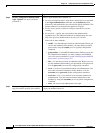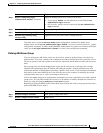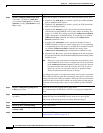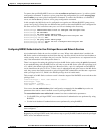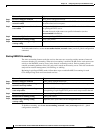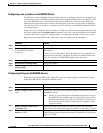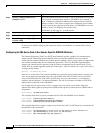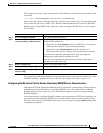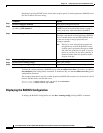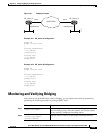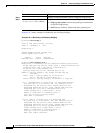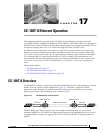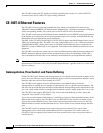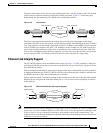
15-20
Cisco ONS 15310-CL and Cisco ONS 15310-MA Ethernet Card Software Feature and Configuration Guide R8.5
78-18133-01
Chapter 15 Configuring Security for the ML-Series Card
RADIUS Stand Alone Mode
Beginning in privileged EXEC mode, follow these steps to specify a vendor-proprietary RADIUS server
host and a shared secret text string:
To delete the vendor-proprietary RADIUS host, use the no radius-server host {hostname | ip-address}
non-standard global configuration command. To disable the key, use the no radius-server key global
configuration command.
This example shows how to specify a vendor-proprietary RADIUS host and to use a secret key of rad124
between the ML-Series card and the server:
Switch(config)# radius-server host 172.20.30.15 nonstandard
Switch(config)# radius-server key rad124
Displaying the RADIUS Configuration
To display the RADIUS configuration, use the show running-config privileged EXEC command.
Command Purpose
Step 1
Router# configure terminal Enter global configuration mode.
Step 2
Router (config)# radius-server host {hostname |
ip-address} non-standard
Specify the IP address or hostname of the remote
RADIUS server host and identify that it is using a
vendor-proprietary implementation of RADIUS.
Step 3
Router (config)# radius-server key string Specify the shared secret text string used between the
ML-Series card and the vendor-proprietary RADIUS
server. The ML-Series card and the RADIUS server
use this text string to encrypt passwords and
exchange responses.
Note The key is a text string that must match the
encryption key used on the RADIUS server.
Leading spaces are ignored, but spaces within
and at the end of the key are used. If you use
spaces in your key, do not enclose the key in
quotation marks unless the quotation marks
are part of the key.
Step 4
Router (config)# end Return to privileged EXEC mode.
Step 5
Router# show running-config Verify your settings.
Step 6
Router# copy running-config startup-config (Optional) Save your entries in the configuration file.



